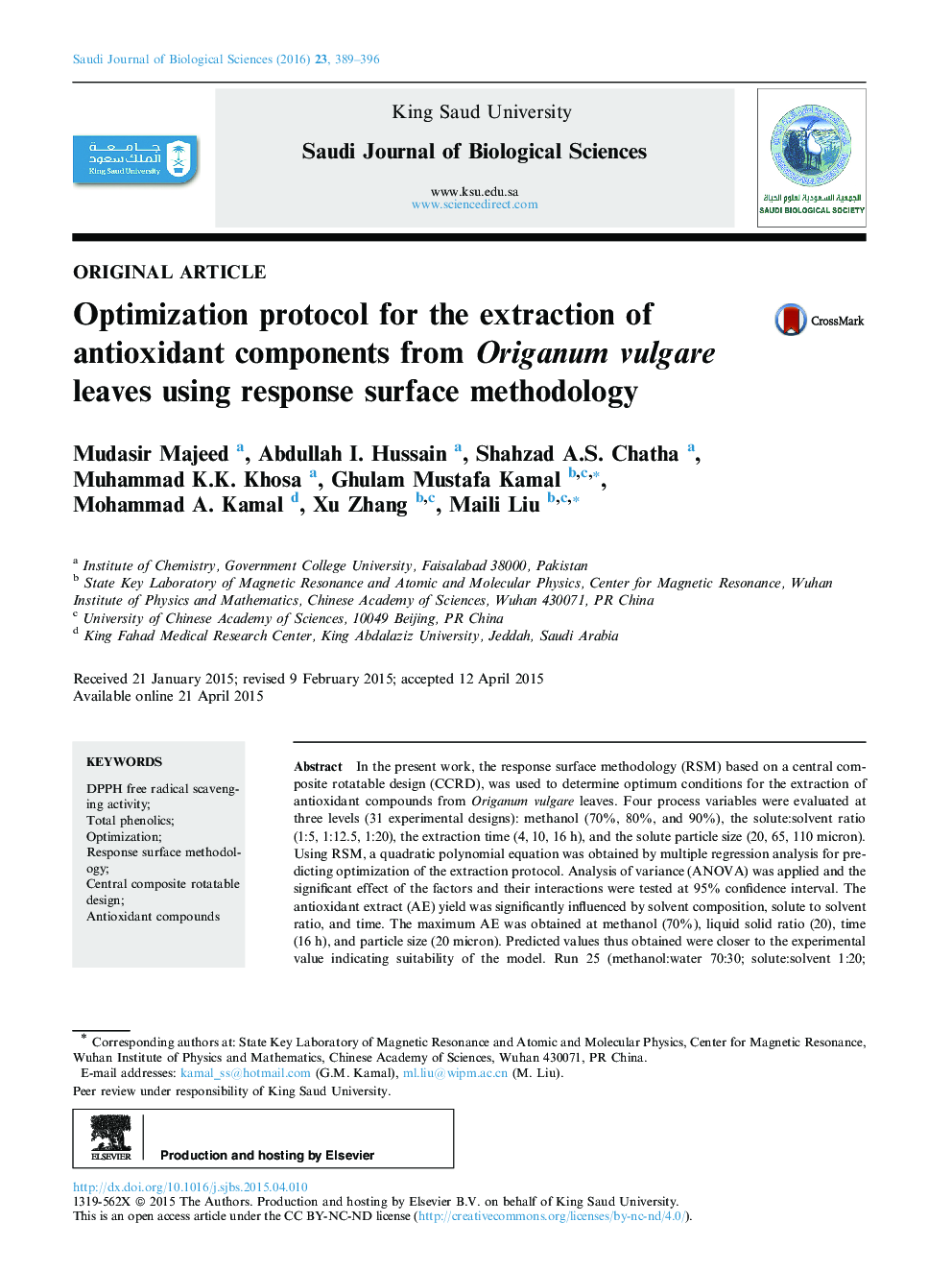| Article ID | Journal | Published Year | Pages | File Type |
|---|---|---|---|---|
| 4406138 | Saudi Journal of Biological Sciences | 2016 | 8 Pages |
In the present work, the response surface methodology (RSM) based on a central composite rotatable design (CCRD), was used to determine optimum conditions for the extraction of antioxidant compounds from Origanum vulgare leaves. Four process variables were evaluated at three levels (31 experimental designs): methanol (70%, 80%, and 90%), the solute:solvent ratio (1:5, 1:12.5, 1:20), the extraction time (4, 10, 16 h), and the solute particle size (20, 65, 110 micron). Using RSM, a quadratic polynomial equation was obtained by multiple regression analysis for predicting optimization of the extraction protocol. Analysis of variance (ANOVA) was applied and the significant effect of the factors and their interactions were tested at 95% confidence interval. The antioxidant extract (AE) yield was significantly influenced by solvent composition, solute to solvent ratio, and time. The maximum AE was obtained at methanol (70%), liquid solid ratio (20), time (16 h), and particle size (20 micron). Predicted values thus obtained were closer to the experimental value indicating suitability of the model. Run 25 (methanol:water 70:30; solute:solvent 1:20; extraction time 16 h and solute particle size 20) showed highest TP contents (18.75 mg/g of dry material, measured as gallic acid equivalents) and DPPH radical scavenging activity (IC50 5.04 μg/mL). Results of the present study indicated good correlation between TP contents and DPPH radical scavenging activity. Results of the study indicated that phenolic compounds are powerful scavengers of free radical as demonstrated by a good correlation between TP contents and DPPH radical scavenging activity.
